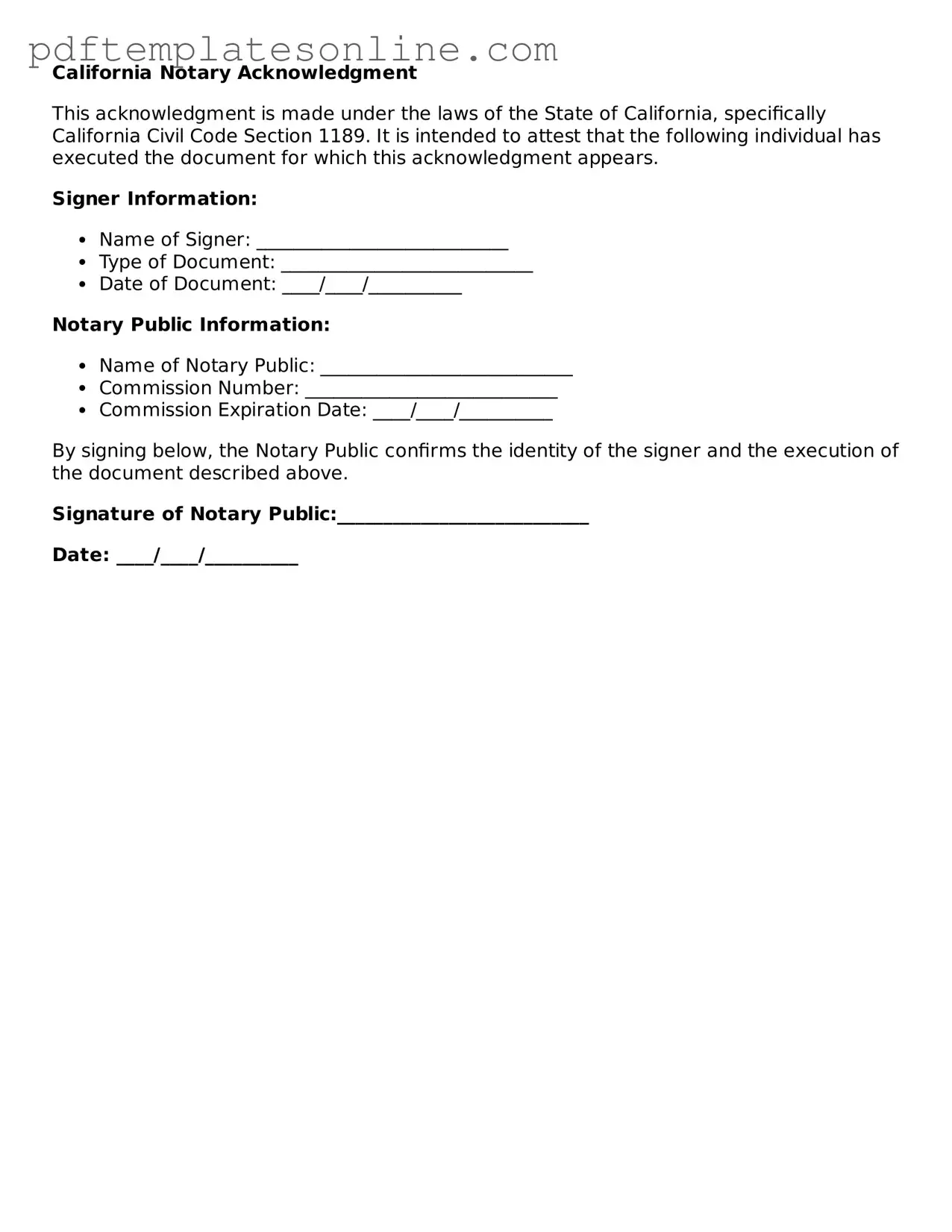Filling out the California Notary Acknowledgment form can seem straightforward, but many people make common mistakes that can lead to delays or even invalidations. One frequent error is failing to include the correct date. The date is crucial as it indicates when the acknowledgment took place. Without it, the document may not be considered valid, leading to unnecessary complications down the line.
Another mistake often made is not properly identifying the signer. The form requires the name of the individual who is signing the document. Leaving this blank or providing an incorrect name can create confusion and may render the acknowledgment ineffective. Always double-check the spelling and ensure it matches the identification provided.
Additionally, some individuals overlook the requirement for the notary's signature. It may seem minor, but without the notary's signature, the acknowledgment is incomplete. The notary's signature serves as a seal of authenticity, confirming that the acknowledgment was performed according to the law.
Inaccurate or missing notary seals also pose a problem. Each notary public must use their official seal when completing the acknowledgment form. If the seal is missing or unclear, the document may not hold up in legal situations. It’s essential to ensure that the seal is applied correctly and is legible.
Another common oversight involves not providing the correct venue. The venue refers to the location where the acknowledgment is taking place. Omitting this information can lead to questions about the legitimacy of the document. Always include the county and state where the acknowledgment is performed.
Finally, many people forget to review the entire form before submission. Rushing through the process can lead to multiple errors, from typos to missing information. Taking a moment to review the completed form can save time and prevent potential issues. By paying attention to these details, you can ensure a smoother process and avoid unnecessary headaches.
